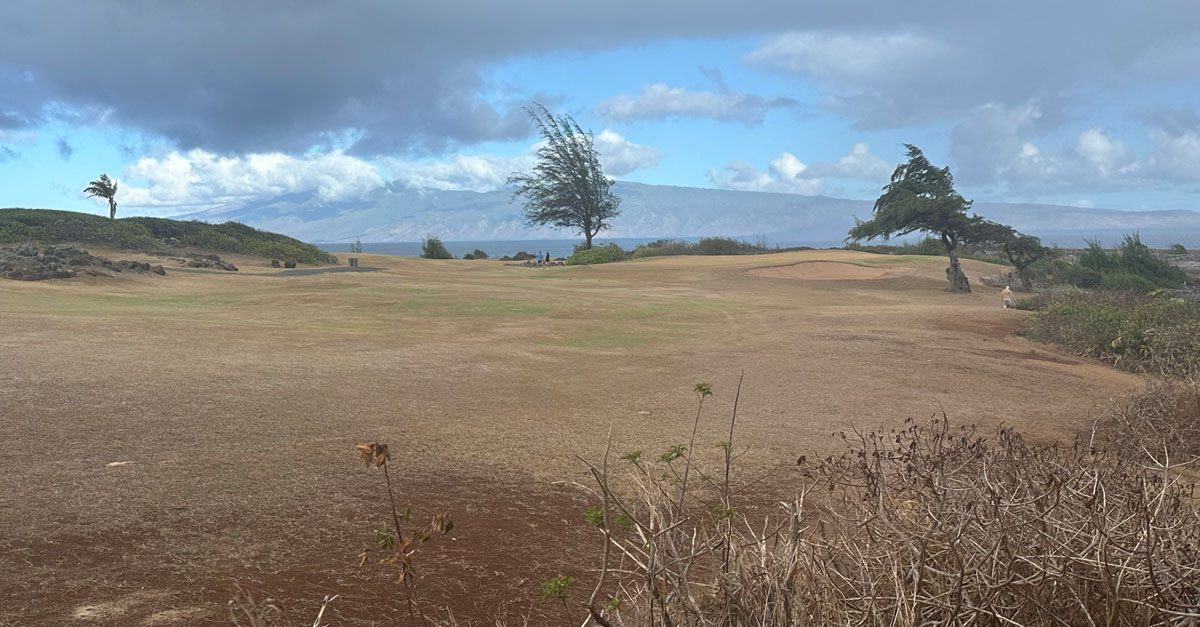Yesterday, some distressing photos of the unwatered golf courses at Kapalua Resort on the island of Maui circulated on social media. Take a look:
Kapalua is best known as the annual site of the Sentry, the first PGA Tour event of the calendar year. Last month, the Tour announced that Kapalua would not host the 2026 edition of the tournament because of drought conditions on Maui and other “logistical complexities.” The resort’s two 18-hole golf courses — the Plantation Course, designed by Coore & Crenshaw in 1991, and the Bay Course, designed by Arnold Palmer and Francis Duane in 1975 — have been closed since early September.
As the Associated Press reported in August, Kapalua is in the midst of a lawsuit with Maui Land & Pineapple, which manages a century-old water system that delivers irrigation to the western part of the island. Kapalua claims that MLP has not properly maintained the ditch system on which the resort relies for irrigation, while MLP contends that the catastrophic decline in water flow is due simply to the ongoing drought.
Yes, this is a highly specific, local story. But it’s also not.
In many parts of the world, the increasing scarcity of water poses an existential threat to golf as an outdoor game. (It is also having — and will have — far more important and dire effects on humanity, but look, I’m a golf writer and this is a golf newsletter.) The trend is undeniable.
But the situation is not entirely out of our control. Golf courses can lessen their reliance on water by reducing turf acreage, experimenting with drought-tolerant grasses, and — perhaps most important — persuading golfers that seasonally browned-out courses are 1) not necessarily unhealthy or ugly and 2) often quite fun to play.
There is a crucial distinction, however, between firm-and-fast and dead. And the sad truth is that there will be more Kapaluas.








